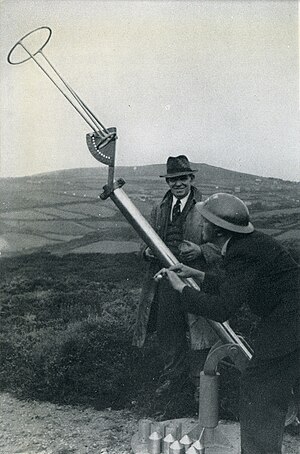Holman Projector
| Holman Projector | |
|---|---|

A Holman Projector prepared for early trials at Porthtowan. A crude anti-aircraft sight is fitted to the mortar barrel.
|
|
| Type | Grenade Projector |
| Place of origin |
|
The Holman Projector was an anti-aircraft weapon used by the Royal Navy during World War II, primarily between early 1940 and late 1941. The weapon was proposed and designed by Holmans, a machine tool manufacturer based at Camborne, Cornwall. A number of models were produced during the war years, but all worked on the principle of a pneumatic mortar, using compressed air or high pressure steam to fire an explosive projectile at enemy aircraft.
Intended primarily as a stop-gap defensive weapon for British merchant ships, which had been suffering heavy losses from Luftwaffe aircraft flying anti-shipping missions, the low altitude at which such strikes often took place (such as during torpedo attacks by Heinkel He 111's or skip-bombing attacks by Focke-Wulf Fw 200 Condor) meant that even a weapon of such limited range and velocity could throw up an effective screen of fire over a vessel, even if only to create a distracting or deterrent effect, obliging the enemy to bomb from greater heights reduced bombing accuracy.
While ineffective against normal bombing attacks from higher altitudes, the weapon was far cheaper, easier to build and install in great numbers than conventional anti-aircraft artillery.
Holmans specialised in producing gas compressors and pneumatic equipment and its owner, Treve Holman, conceived a way that his firm could aid in the war effort beyond the production of tools. Recalling the World War I-era Stokes Mortar and its successor, the Ordnance ML 3 inch Mortar, Holman believed that it would be possible to produce a version powered by compressed air.
...
Wikipedia
